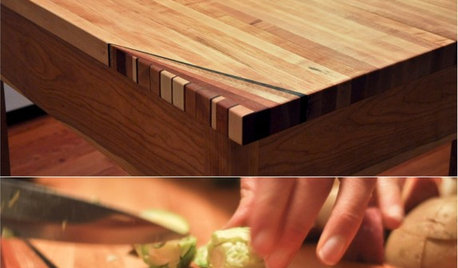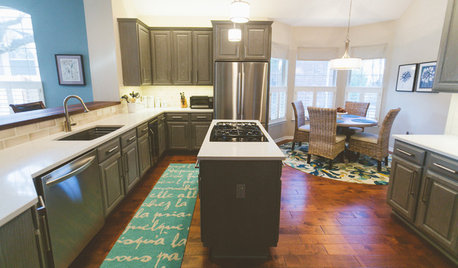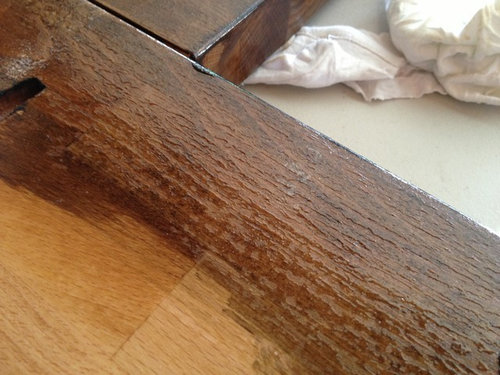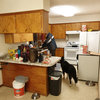Waterlox Troubles
katiemc02
11 years ago
Related Stories

KITCHEN COUNTERTOPS10 Countertop Mashups for the Kitchen
Contrast or complement textures, tones and more by using a mix of materials for countertops and island tops
Full Story
WOODWORKINGHow to Clean and Care for Your Butcher Block
Keep butcher block counters and boards looking sharp as a knife — and sanitized for safe food prep — with this advice from a pro woodworker
Full Story
KITCHEN DESIGNKitchen of the Week: A Budget Makeover in Massachusetts
For less than $3,000 (not including appliances), a designing couple gets a new kitchen that honors the past
Full Story
KITCHEN COUNTERTOPS7 Low-Maintenance Countertops for Your Dream Kitchen
Fingerprints, stains, resealing requirements ... who needs ’em? These countertop materials look great with little effort
Full Story
BEFORE AND AFTERSGray Cabinets Update a Texas Kitchen
Julie Shannon spent 3 years planning her kitchen update, choosing a gray palette and finding the materials for a transitional style
Full StoryMore Discussions











wi-sailorgirl
chiefneil
Related Professionals
Amherst Kitchen & Bathroom Designers · El Dorado Hills Kitchen & Bathroom Designers · Piedmont Kitchen & Bathroom Designers · Woodlawn Kitchen & Bathroom Designers · South Barrington Kitchen & Bathroom Designers · Holden Kitchen & Bathroom Remodelers · Cloverly Kitchen & Bathroom Remodelers · Chandler Kitchen & Bathroom Remodelers · Lisle Kitchen & Bathroom Remodelers · Newberg Kitchen & Bathroom Remodelers · Wilson Kitchen & Bathroom Remodelers · Little Chute Cabinets & Cabinetry · Maywood Cabinets & Cabinetry · North Bay Shore Cabinets & Cabinetry · Baldwin Tile and Stone Contractorskatiemc02Original Author
wi-sailorgirl
katiemc02Original Author